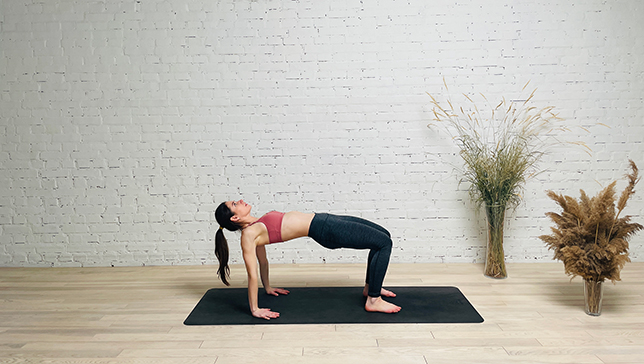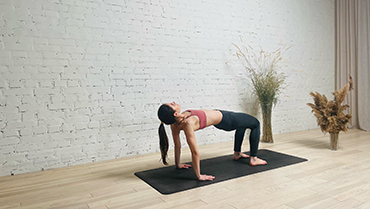Crab Pose - Ardha Purvottanasana

Contents
Crab Pose or Ardha Purvottanasana (ar-dhah PUR-voht-TAH-NAH-sah-nahis) also known as the ‘Reverse Tabletop Pose. Although it is not mentioned in the earliest classical Hatha yoga books, it is a relatively new modification of the ‘Purvottanasa’ for beginners who are looking for an easy backbend that can also strengthen the arms and legs.
When you begin your yoga journey, the most important thing is to take it slow and let your body relax so you can hold a particular pose for a long time. The Crab Pose is ideal and preparatory pose for not just more advanced ones but also brings deep relaxation to the body.
Pose Detail
- Body Position: Arm & Leg Support
- Difficulty: Beginners
- By Type: Chest Opening Yoga Poses, Strengthening Yoga Poses
- By Benefit: Yoga Poses For Stress Relief
Step-by-Step Instructions
Benefits and Contraindications
Strengthens the arms, wrists, legs and back
Improves posture
Boosts energy and relieves fatigue
Relieves stress
Creates a sense of balance
Opens the chest
Stretches the spine, shoulders, abdomen and hamstrings
Pain in your wrist or carpal tunnel syndrome
Shoulder pain
Neck injury
Photo poses in different angles

Modifications, Props and Tips
- Only lift your hips as high as your body currently allows. Never force the pose.
- If you’re having trouble keeping your hips lifted, place a yoga block, bolster, or stack of blankets under your hips to support your pelvis. Allow your weight to rest on the block. Gradually lift your hips as you build strength.
- Students with less strength and/or flexibility can also practice the pose with their hands on the edge of a chair that is secured against a wall. Hold onto the edges of the chair seat, then lift into the pose.
- More experienced students can try keeping the buttocks relaxed in the pose, using only the thigh muscles to lift the hips.
- More advanced students can extend the legs straight forward into Upward Plank Pose (Purvottanasana). Come into Reverse Table. Then, keep the hips lifted high as you completely straighten both legs in front of you. Press down through the toes and try to place the soles of the feet on the floor.